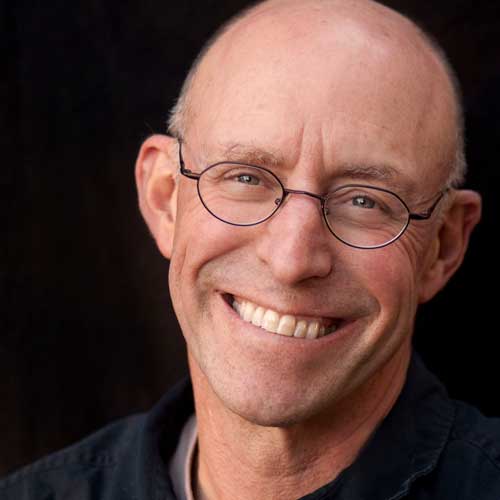APA.org.......APA Style.......APA Services.......Divisions
REGISTRATION FOR APA 2024 OPENS APRIL 24.
Thought Leader Q&A: How Psychedelics May Soon Change Modern Therapy
Note: This blog post features a thought leader from APA 2019. This will not be a session at APA 2023.
Author Michael Pollan doesn't do anything halfway—which explains why, when investigating the therapeutic use of psychedelics for a variety of mental health concerns, he took part in several of his own drug journeys, each under the watch of trained psychedelic therapists. The experiences surprised him. "I learned a lot about myself and came out of it with a very different sense of spirituality," says Pollan, who underwent seven different drug "experiences" while writing the book, including those with psilocybin (the active ingredient in magic mushrooms), LSD and a crystallized venom of a Sonoran Desert toad. "You start to perceive the world from a different, less ego-centric, perspective, and it brought down any kind of walls between myself and whatever or whoever was around me." These experiences and more are reflected in his 2018 book, "How to Change Your Mind: What the New Science of Psychedelics Teaches Us About Consciousness, Dying, Addiction, Depression, and Transcendence."
We asked Pollan about his experience and to give us a preview of his upcoming presentation at APA 2019 in Chicago.
What drew you to explore psychedelics for therapeutic purposes?
The research that's come out in the last couple of years suggests that there may be real potential here to add an important new tool to the pharmacopeia for several different indications. Having interviewed dozens of volunteers who are being treated in drug trials for addiction, depression, anxiety and more, I was struck at several cases of powerful transformation that people have had after a single guided psychedelic experience. There haven't been a lot of new tools introduced into psychiatry to help with mental illness in the last couple of decades. Here is something that is not exactly a new tool—in fact, it's a very old one— but one that has been overlooked and may have the potential to help relieve human suffering.
What is a psychedelic therapy session like?
In a therapeutic session using psychedelics, there are typically two therapists, usually a man and woman, who prepare the patient over several hours as to what to expect. The therapists are present during the entire psychedelic session, which can last about six hours. The patient wears eyeshades and listens to music on headphones. The eyeshades and headphones encourage people to go inward, which is the goal of the session. In the days after the session, the patient comes back for an integration session, a critical phase during which the patient tells the story of what happened during the session, what they saw and experienced. With the help of the therapists, they try to make sense of it and determine what these new perspectives might tell them about their illness or how they might be applied to the conduct of their lives.
What are some of the more surprising things you discovered while researching your book?
The use of psychedelics is an attempt to go to the root cause--not just mitigate symptoms but change people's perspectives and behaviors. It's not exactly a pharmacological effect that the therapists are administering, it's a psychological experience. There is a dissolution in a sense of self, followed by a merging with something larger than you—a certain oneness, accompanied by a transcendence of space and time. And there is this sense that whatever insights you've gained during the experience have an uncanny authority. It's an experiential therapy. We know that a single powerful negative experience, which we call a trauma, can change the mind and the brain. So, is it possible that a single powerful positive experience can do the same thing in the opposite direction?
Is it always the same medication?
Most of the current work is with psilocybin. There are 150 species of mushrooms in this family that produces this chemical, although it is now synthesized for clinical. It's similar to LSD in that it acts on the same receptors but it's not as controversial and only lasts about half as long. There is also work going on with MDMA, which is also known as Ecstasy. This is not a classic psychedelic, but it's often lumped under that rubric. It is being used to treat trauma, in a series of phase-three clinical trials that are showing great promise.
How might therapists get involved with this type of psychedelic therapy?
There are currently many trials going on at universities and medical centers across the country . There are two big depression trials getting underway this summer in the United States, one by a nonprofit called USONA and another being organized by a new British pharmaceutical company called Compass Pathways. Each will have six to eight sites around the United States. These drugs may be approved in the next five years or so—both MDMA and psilocybin have breakthrough therapy designation from the FDA, so it's moving along pretty quickly. Tn the same way that psychologists now work with psychopharmacologists and psychiatrists, they may well have access to this treatment before very long.
It's important to remember that this research going on represents a sort of renaissance. These drugs were researched very carefully in the 1950s and into the ‘60s. Most of today's experiments are reprising those earlier ones with better controls and standards. But there is a sea change underway around psychedelics and a recognition that the mental health community needs some new approaches. We have a tremendous mental health crisis on our hands and the system is broken. Here, potentially, is a promising and very novel new tool.
Interviewed by Alyssa Shaffer
American Psychological Association
750 First St. NE, Washington, DC 20002


